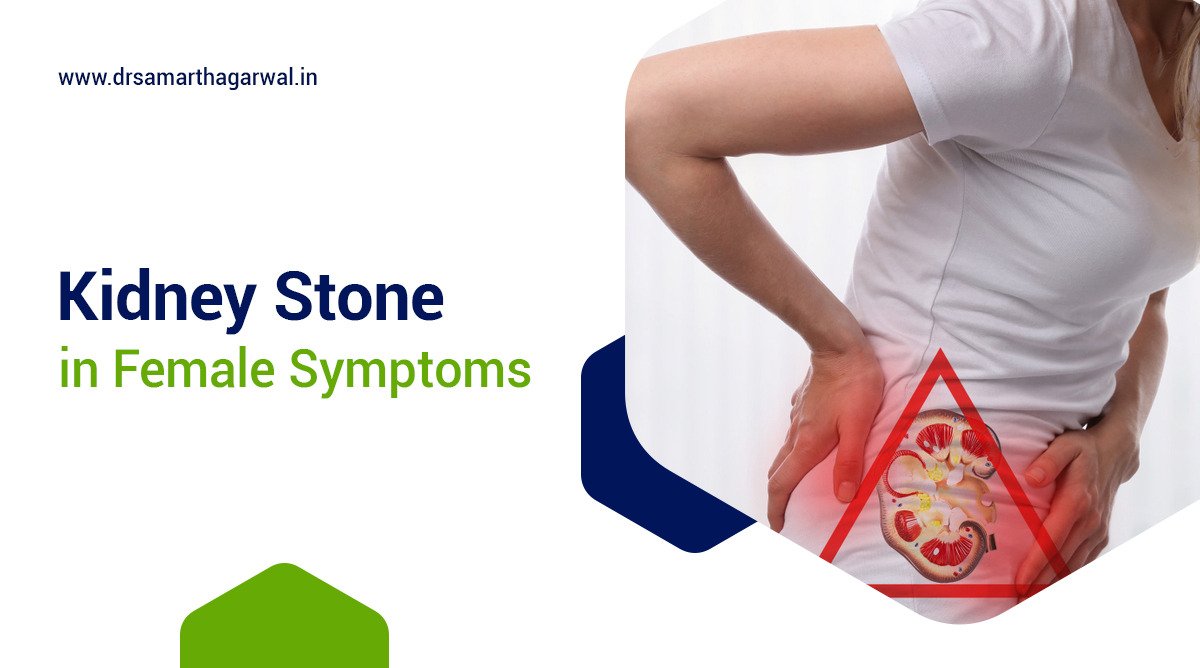Kidney stones are a common health problem that affects millions of people worldwide. While they can occur in anyone, women are more prone to certain types of kidney stones, such asine stones and uric acid stones. Understanding symptoms, causes, and treatment options is for effective management and prevention of kidney stones in females.
The symptoms of kidney stones in females can vary depending on the size and location of the stone. Common symptoms include severe pain in the side or back, below the ribs, nausea and vomiting, frequent or painful urination, and blood in the urine. to a study published in PubMed, kidney stones can cause significant morbidity and mortality, especially in pregnant women. Prompt diagnosis and treatment are essential to prevent complications.
The causes of kidney stones in females are multifaceted and can include dehydration, dietary factors, family history, and underlying medical conditions. Treatment options range from dietary changes and medication to surgical interventions, depending on the severity of the condition. By understanding the various aspects of kidney stones in females, individuals can take proactive steps to prevent and manage this condition.
What are the symptoms of kidney stones in a female?
The symptoms of kidney stones in women can vary depending on the size and location of the stone. Common symptoms include a sharp, cramping pain in the lower abdomen or back, which can radiate to the groin area.
This pain can be severe and can come and go as the stone moves through the urinary tract. Other symptoms may include pain or burning during urination, cloudy or foul-smelling urine, frequent urination, or the feeling of needing to urinate even after the bladder has been emptied.
In some cases, women may experience nausea, vomiting, or fever in addition to the pain. The symptoms can be similar to those of other conditions, such as appendicitis, ectopic pregnancy, or ovarian cysts, making it essential to seek medical attention for an accurate diagnosis. If left untreated, kidney stones can cause complications such as urinary tract infections, kidney damage, or kidney disease.
A 2021 research paper published in PubMed by A Hoffman confirms that symptoms of kidney stones include renal colic, dysuria, urinary frequency, hematuria, fever, flank pain, and groin pain, with renal ultrasonography being the recommended first-line diagnostic test.
Here are the 11 main symptoms of kidney stones in a female:
- Severe pain on either side of the lower back, which can radiate to the abdomen, groin, or genitals.
- Vague pain or stomach ache that doesn’t go away.
- Blood in the urine (hematuria).
- Nausea or vomiting.
- Fever and chills.
- Urine that smells bad or looks cloudy.
- Sharp, cramping pain in the back and side.
- Pain that moves to the lower abdomen or groin area.
- Frequent urination or urgent need to urinate.
- Painful urination (dysuria).
- Burning sensation while urinating.
What do kidney stones feel like in a woman?
A kidney stone in a woman can feel like a sharp, cramping pain in the lower abdomen or back, typically on one side. The pain may move to the lower abdomen or groin area as the stone passes through the urinary tract.
Where does a woman hurt with kidney stones?
A woman with kidney stones typically feels pain in her lower abdomen or back, which can radiate to the groin area.
You might also like: Ketamine Bladder Syndrome Symptoms
What are the first warning signs of kidney stones?
Here are some of the first warning signs of kidney stones:
- Severe pain in the back, belly, or groin: This is often the first and most noticeable symptom of kidney stones. The pain can be sudden and intense, and it may come in waves.
- Blood in the urine (hematuria): Kidney stones can cause bleeding, which can make the urine appear pink, red, or brown.
- Difficulty urinating: Kidney stones can block the flow of urine, making it painful or difficult to urinate.
- Frequent urination: As the stone moves through the urinary tract, it can irritate the bladder and cause a frequent urge to urinate.
- Nausea and vomiting: The pain from a kidney stone can sometimes cause nausea and vomiting.
- Fever and chills: If the kidney stone is accompanied by an infection, the person may experience fever and chills.
- Cloudy or foul-smelling urine: Kidney stones can sometimes cause changes in the appearance or odor of the urine.
It’s important to seek medical attention if you experience any of these symptoms, as kidney stones can be a serious condition that requires prompt treatment.
How to get rid of kidney stones in females?
To get rid of kidney stones in females, it is essential to adopt a holistic approach that incorporates dietary changes, lifestyle modifications, and home remedies.
Getting rid of kidney stones in females requires a comprehensive approach that includes:
- Lifestyle Changes: Drinking plenty of water, reducing sodium intake, and limiting animal protein can help prevent kidney stones from forming.
- Dietary Modifications: Eating a diet low in oxalate, calcium, and vitamin C can help reduce the risk of developing kidney stones.
- Medical Interventions: Medications such as alpha-blockers and diuretics can help manage symptoms and prevent complications.
- Surgery: In some cases, surgery may be necessary to remove the kidney stone.
Natural Remedies to Fight Kidney Stones in Females
In addition to medical interventions, certain natural remedies can help alleviate symptoms and prevent kidney stones from forming. These include:
- Stay Hydrated: Drinking plenty of water can help flush out small kidney stones and prevent new ones from forming.
- Increase Citric Acid Intake: Citric acid can help break down stones and prevent them from forming.
- Limit Foods High in Oxalates: Foods high in oxalates, such as spinach and beets, can increase the risk of developing kidney stones.
Getting rid of kidney stones in females requires a comprehensive approach that includes lifestyle changes, dietary modifications, and medical interventions. By understanding the causes, symptoms, and treatment options, females can take steps to prevent kidney stones from forming and alleviate symptoms.
How can a woman pass a kidney stone faster?
A woman can pass a kidney stone faster by drinking plenty of fluids, staying active, taking pain medicine as needed, and taking a hot bath or shower to decrease pain.
What are the long-term health risks of kidney stones in women?
The long-term health risks of kidney stones in women primarily involve potential damage to the kidneys and urinary tract system. Kidney stones can obstruct the ureter, leading to complications such as kidney damage. Struvite stones, common in infections, and uric acid stones, stemming from dietary factors, are types of kidney stones that can affect women.
Calcium stones, the most common type of kidney stone, can form due to various factors including dehydration and dietary habits.
Repeated occurrences of kidney stones increase the risk of chronic kidney disease. Large stones that obstruct the flow of urine can cause severe kidney stone pain and may require surgical intervention to break up the stone or help the stone pass. Kidney stones often necessitate medical treatment to prevent long-term damage to the kidney or ureter.
Inability to effectively manage and prevent kidney stones can lead to the formation of larger kidney stones, which are more difficult to pass and can cause significant discomfort.
Preventing kidney stones involves measures such as staying hydrated and adjusting dietary intake to reduce the risk of stone formation. Symptoms of a kidney stone include severe pain, which can indicate the stone’s size and its impact on the kidney or ureter.
Timely intervention and lifestyle adjustments can mitigate the long-term health risks associated with kidney stones in women, emphasizing the importance of recognizing symptoms and causes early to prevent kidney stones and their subsequent health implications.
What are the treatment options for kidney stones in women?
Here are the main treatment options for kidney stones in women:
- Pain management:
- Over-the-counter pain medications like ibuprofen or acetaminophen can help manage the pain.
- Prescription pain medications may be needed for severe pain.
- Hydration:
- Drinking plenty of water is important to help flush out the stone and prevent new stones from forming.
- The recommended daily fluid intake for women with kidney stones is usually 2-3 liters.
- Medication:
- Alpha-blocker medications like tamsulosin can help relax the ureter and facilitate the passage of the stone.
- Calcium channel blockers like nifedipine may also be used to help pass the stone.
- Thiazide diuretics can help prevent the formation of new stones.
- Shock wave lithotripsy (SWL):
- This non-invasive procedure uses focused sound waves to break up the stone into smaller pieces that can then pass more easily.
- Ureteroscopy:
- This minimally invasive procedure involves inserting a small camera and tools through the urethra and bladder to locate and remove or break up the stone.
- Percutaneous nephrolithotomy (PCNL):
- For larger stones, this procedure involves making a small incision in the back to access the kidney and remove the stone.
The specific treatment recommended will depend on the size and location of the stone, as well as the individual patient’s health and preferences. Women may have some unique considerations, such as the potential impact of pregnancy on stone formation and treatment options.

If you are in search of a urologist specializing in female care, look no further. I recommend contacting Dr. Samarth Agarwal, who is well-equipped to provide comprehensive treatments and consultations tailored to your specific needs.




